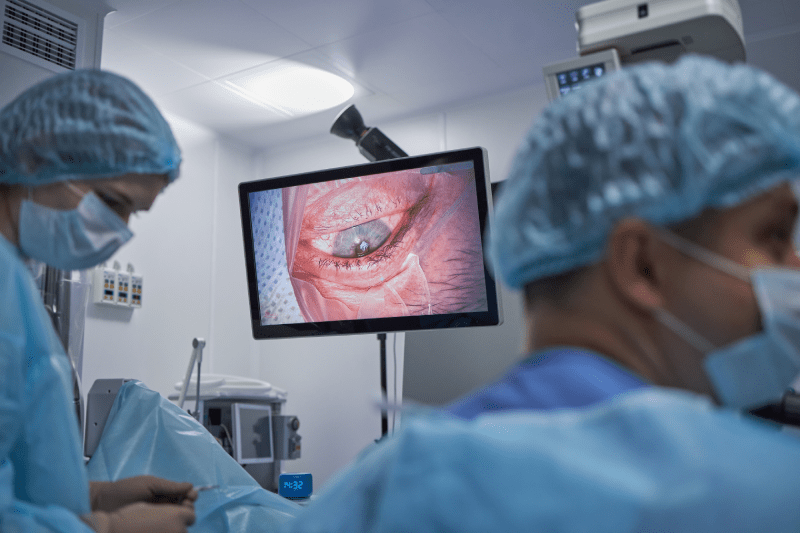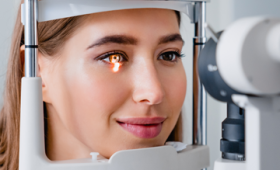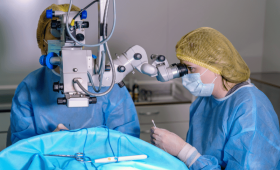What Exactly Is LASIK Eye Surgery
LASIK (Laser-Assisted in Situ Keratomileusis) is the most widely performed refractive surgery method globally, permanently correcting vision defects such as myopia, hyperopia, and astigmatism. In this technique, a thin flap is created in the uppermost layer of the cornea (part of the epithelium and stroma) using a special microkeratome or, more commonly, a femtosecond laser. This flap is gently lifted aside. Subsequently, the underlying corneal tissue is reshaped with an excimer laser according to the patient’s specific eye defect. Once the procedure is complete, the flap is repositioned. This method is known for providing fast recovery time and high patient comfort.
How Is The LASIK Treatment Applied
LASIK treatment begins after the eyes are anesthetized with drops. The patient’s eye is secured with a speculum to prevent blinking. In the first stage, a precise flap is created in the cornea using a femtosecond laser and folded aside. In the second stage, the corneal surface beneath the flap is reshaped by a computer-controlled excimer laser according to the patient’s vision defect. The laser application only takes seconds, and the laser operates with millimeter precision thanks to systems that continuously track eye movements. Finally, the flap is repositioned. The flap remains in place without stitches due to its natural adhesion properties, and the treatment concludes.
Why Are LASIK Prices Advantageous In Turkey
The main reason why LASIK prices in Turkey are competitive and advantageous compared to the international market is that general operating expenses, personnel costs, and living standards are significantly lower than in European and North American countries. Although Turkey invests heavily in health tourism and houses the latest technology laser devices, this cost advantage is reflected in the prices. The high foreign exchange rate creates an additional cost-effectiveness for international patients, offering affordable and accessible treatment without compromising quality. You can contact Cure Holiday to benefit from these advantages.
Which Vision Defects Does LASIK Correct
LASIK successfully corrects three main refractive errors, including myopia (inability to see far clearly), hyperopia (inability to see near clearly), and astigmatism (distorted vision caused by an irregular corneal surface). It is known to be effective, especially in cases of up to -10 diopters of myopia, up to +4 diopters of hyperopia, and up to -6 diopters of astigmatism. The goal of the treatment is to reshape the cornea so that light focuses precisely on the retina, allowing the patient to achieve clear vision without glasses or lenses. The final decision is made after evaluating corneal thickness and the stability of the vision defect during the preliminary examination.
What Are The Eligibility Requirements For LASIK
Key requirements for being a suitable candidate for LASIK surgery include being at least 18 years old and having an eye prescription that has not changed significantly in the last year. The most critical factor is having sufficient corneal thickness; even after the flap is created, the remaining corneal bed must be adequately strong. Furthermore, the patient is expected not to be pregnant or breastfeeding, not to have systemic diseases like uncontrolled diabetes or rheumatic diseases, and not to have progressive eye diseases such as keratoconus. It is best to consult with specialists in Turkey through Cure Holiday for a detailed and definitive eligibility assessment.
Is The LASIK Operation Painful
LASIK surgery is completely painless thanks to the anesthetic eye drops used during the procedure. Patients do not feel any sharp pain or discomfort while the laser is applied; they may only feel some pressure or a slight vibrating sensation around the eye. A feeling of slight stinging or watering may occur for a few hours after the procedure, but this is generally not severe pain and is easily controlled with prescription pain-relieving drops. Compared to surface treatments like LASEK/PRK, the recovery process is much more comfortable and shorter.
What Preparations Are Necessary Before Treatment
The most important preparation before LASIK treatment is to stop wearing contact lenses for a certain period. Patients wearing soft contact lenses should typically stop wearing them at least one week in advance, while those wearing hard (RGP) contact lenses should stop 3 to 4 weeks in advance to allow the cornea to return to its natural shape. This is mandatory for the laser to be accurately and custom-calibrated. Additionally, the patient undergoes a detailed eye examination, including corneal mapping, corneal thickness, and pupil size measurements, as well as advanced tests.
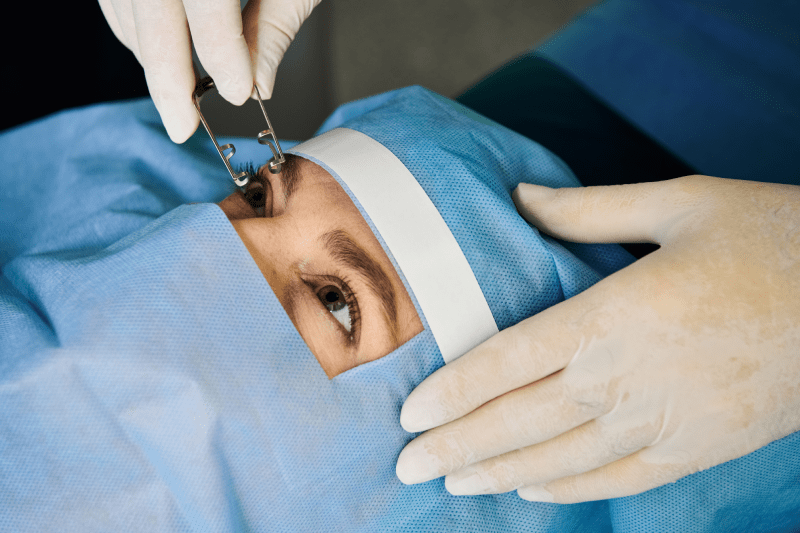
How Long Does The Surgery Take
LASIK surgery is a relatively quick procedure, even when including preparation stages. The total time the patient spends in the operating room for both eyes is typically between 10 to 15 minutes. The actual laser application time is much shorter; the reshaping of the corneal tissue beneath the flap usually takes less than one minute for each eye, depending on the degree of the patient’s vision defect. This speed increases the safety of the operation and minimizes patient stress. Clinics in Turkey plan appointments to align with this efficient process.
What Is The Recovery Process Like After LASIK
The biggest advantage of LASIK is that it offers an incredibly fast recovery process. Since the flap is immediately repositioned, patients typically begin to experience noticeable visual clarity within just a few hours after the surgery. Many people can return to their normal daily activities, including work, after the check-up the next day. Full visual acuity is reached within a few days to a week. This rapid recovery makes LASIK an excellent option for patients with time constraints or those who want a quick recovery after treatment.
When Does Vision Clear Up After LASIK
Unlike other surface ablation methods (LASEK/PRK), patients usually notice significantly clearer vision within the first few hours after the surgery following LASIK. Although the world may be blurry when the eyes are first opened, this blurriness dissipates very quickly. Most patients achieve clarity meeting legal driving limits during the first check-up the next morning, and their vision reaches near-full sharpness within a few days. Full and final clarity is achieved within a few weeks as the eyes fully stabilize, but daily function resumes almost immediately.
What Precautions Should Be Taken During The Recovery Period
Precautions during the recovery period after LASIK aim to ensure the flap remains in place and to prevent the risk of infection. Rubbing or scratching the eyes is strictly forbidden, especially in the first few days. The protective eye shields provided by the doctor must be used while sleeping on the first night. To reduce the risk of infection, water, soap, or dirty environments should be avoided for the first week. Pool and sea activities should be postponed for at least 2-3 weeks. Furthermore, sun protection and regular use of prescribed eye drops are vital for the success of the recovery.
What Are The Potential Risks Of LASIK Treatment
While LASIK is generally considered very safe, there are some specific risks associated with flap creation. These include flap complications (displacement or irregular healing), temporary or permanent dry eyes which can be more frequent and noticeable than with other methods, and glare (halo) or light scattering (glare) effects in night vision. Rarely, irregular healing of the tissue beneath the flap (epithelial ingrowth) may occur. Modern centers in Turkey minimize these risks by using femtosecond lasers for flap creation.
Which Laser Technology Do Clinics In Turkey Use
Leading eye clinics in Turkey use the latest technology devices to offer international-standard LASIK treatment. Femtosecond Laser (bladeless LASIK) technology is widely used for the flap creation stage; this eliminates the risks of mechanical blades. For correction, high-speed and advanced Excimer Laser devices are preferred. These lasers are equipped with systems that continuously track the patient’s eye movements (eye-tracker), ensuring maximum precision and safety at every moment of the treatment. Cure Holiday works with centers using the most current and reliable technology.
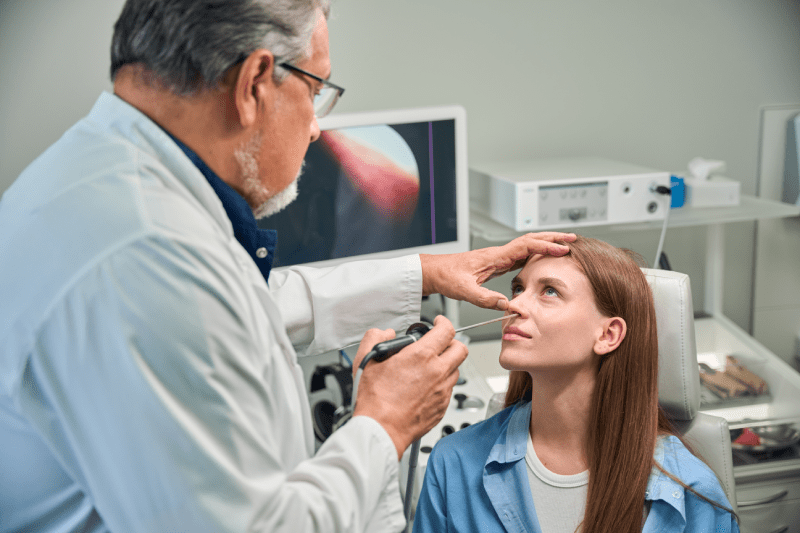
How Permanent Are The Results After LASIK
The vision correction results obtained with LASIK are permanent. Since the laser anatomically changes the shape of the cornea, the treated refractive defect (myopia, hyperopia, astigmatism) is not expected to return. However, it is essential that the patient’s eye prescription was stable before the surgery for a successful outcome. It should be noted that presbyopia (difficulty seeing near), a natural process that develops after the age of 40 due to aging, is not a condition corrected by laser treatment and may require reading glasses in the future.
How Long Should One Stay In Turkey For Treatment
Due to the rapid recovery period of LASIK treatment, the time patients need to stay in Turkey is relatively short. The pre-operative detailed examination and the surgery itself usually take one day. Since patients must attend the clinic for at least one or two mandatory post-operative check-ups, the minimum length of stay in Turkey is recommended to be 3 to 4 days. This period is sufficient both to complete the treatment and to safely navigate the initial stages of recovery. Cure Holiday will integrate this short period into your travel plan in the most suitable way.
When Should Contact Lens Use Be Discontinued
Since contact lenses cause temporary shape changes on the corneal surface, they must be discontinued before LASIK surgery to ensure accurate and precise measurements. Patients wearing soft contact lenses should stop wearing them at least 7 days in advance, while those wearing hard (RGP) lenses should typically switch to glasses 3-4 weeks in advance to allow the cornea to return to its natural shape. Adhering to this rule is critically important for the faultless determination of the personalized laser profile and the success of the treatment.
What Is The Fundamental Difference From LASEK Or PRK
The fundamental difference between LASIK and surface ablation methods like LASEK (or PRK) is the creation of a permanent flap with a laser, instead of using alcohol or mechanical scraping on the corneal surface. In LASIK, the flap is lifted, the underlying tissue is treated, and the flap is closed back; this means very rapid vision recovery and almost no pain. In LASEK/PRK, the epithelium is removed, the treatment is done, and the epithelium is expected to heal spontaneously, which means a painful recovery period of 3-5 days and slower vision clearing.
Can High Eye Prescriptions Be Treated
LASIK is generally successful in treating high myopia, hyperopia, and astigmatism. However, the treatment of high prescriptions requires more tissue removal from the cornea. Therefore, the most restrictive factor for LASIK is the sufficient corneal thickness that must remain after the surgery. Patients with high prescriptions must undergo very detailed examinations to ensure the remaining corneal bed is sufficiently strong. If the cornea is too thin, specialists may recommend a safer treatment method like LASEK or an alternative procedure.
Is LASIK Suitable For Astigmatism Treatment
Yes, the LASIK method is highly effective and frequently used in astigmatism treatment. Astigmatism is caused by the cornea having an oval shape, like a rugby ball instead of a basketball. LASIK uses topographic mapping data to precisely guide the laser and correct this irregular curvature of the cornea. This allows light rays to form a single clear focal point on the retina, correcting the patient’s blurred and distorted vision. Cure Holiday enables you to work with centers using state-of-the-art devices for astigmatism treatment.
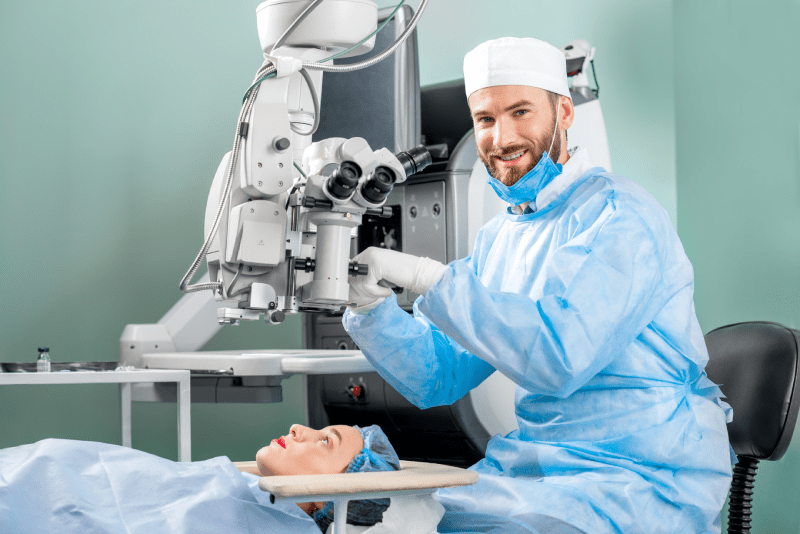
Does Dry Eye Pose A Barrier For LASIK
Dry eye is a condition that can temporarily worsen after LASIK surgery and, in some cases, become permanent. This is because the corneal nerves are cut during flap creation, temporarily reducing the eye’s natural lubrication reflex. Therefore, patients with severe dry eye before the surgery are generally not considered suitable for LASIK; they are advised to use surface treatments like LASEK/PRK that minimize nerve damage. Those with mild dryness can manage the condition with moisturizing drops after the surgery.
From What Age Is LASIK Surgery Performed
The minimum age limit determined for LASIK surgery is 18. Since eye prescriptions in individuals under this age generally tend to keep changing, the long-term permanence of the treatment cannot be guaranteed. For the surgery to be performed, the patient’s eye prescription is expected not to have progressed by more than 0.5 diopters in the last year, which indicates that the eye is refractively stable. Although there is no upper age limit, in advanced ages, additional eye diseases such as cataracts may necessitate a different treatment instead of LASIK.
How Is The Detailed Pre-Treatment Examination Conducted
The detailed pre-treatment examination is the most critical step for LASIK success and safety. This examination not only measures your eye prescription but also checks the corneal thickness, curvature (topography), pupil diameter in the dark and light, intraocular pressure, and general eye health. Especially corneal topography and pachymetry (thickness measurement) are vital for determining whether the flap can be safely created. All these tests allow the laser to create a personalized and flawless treatment plan.
How Are Post-Operative Eye Check-Ups Monitored
Post-operative eye check-ups after LASIK are often kept short due to the rapid recovery. The first and most important check-up is usually done the day after the surgery; in this check, the flap’s position and your visual acuity are assessed. Subsequently, additional check-ups may be planned at one week, one month, three months, and six months. For international patients, clinics usually complete the mandatory checks within the first week and provide reports and referrals for patients to continue follow-up with an eye doctor in their home country.
What Do LASIK Package Prices Cover
LASIK package prices in Turkey are generally offered as highly comprehensive and all-inclusive. The basic content of a LASIK package usually covers: comprehensive detailed pre-operative examinations, laser surgery for both eyes (mostly femtosecond LASIK), consumables used during the procedure, necessary first medications, drops, and protective glasses after the surgery. In packages purchased through health tourism agencies, logistical services such as airport transfers and accommodation in partner hotels may also be included in the price.
What Are The LASIK Treatment Options In Istanbul
Istanbul is an internationally prominent center for LASIK treatment, offering modern and advanced health facilities. The city has numerous eye clinics that use the latest femtosecond and excimer laser technologies and hold international accreditations like JCI. These clinics not only offer top-level medical service but also provide comfortable and multilingual services specifically designed for foreign patients. With Cure Holiday, you can easily access the best LASIK treatment centers offered in Istanbul and quickly schedule your appointment.
What Are The Advantages Of Getting Treated In Antalya
Antalya is an excellent alternative for patients who want to combine health treatment with rest and vacation. The peaceful atmosphere and sun of the Mediterranean make the initial stages of your recovery period more enjoyable. Clinics in Antalya also have modern technology and experienced surgeons, similar to those in Istanbul. Thanks to LASIK’s rapid recovery advantage, you can start relaxing by the sea just a few days after treatment (of course, protecting your eyes from water and wearing sunglasses). Cure Holiday prepares personalized treatment and accommodation packages in Antalya that embrace all its beauties.
How Should Sun Protection Be Done After LASIK
Sun protection is very important during the post-LASIK recovery period. The corneal tissue reshaped by the laser is sensitive to UV rays, especially in the first few months. Sunlight can trigger the formation of haze (corneal cloudiness), which may affect vision quality. Therefore, it is highly recommended that patients wear high-quality, 100% UV-protected sunglasses when going outside, even if the weather is cloudy. Strict adherence to this protection rule for at least 3 to 6 months is vital for a successful outcome.
When Is It Allowed To Start Exercising
Thanks to the rapid healing feature of LASIK, the return to sports activities is quite short. Light exercises and activities like walking can generally be started one day after the surgery. However, contact sports (such as football, boxing, etc.) that carry the risk of eye impact and cause intense sweating, and water sports (swimming, diving) are recommended to be postponed for at least 2 to 4 weeks due to the risk of flap displacement and infection. The approval of the specialist physician should be obtained for the flap to fully heal and stabilize.
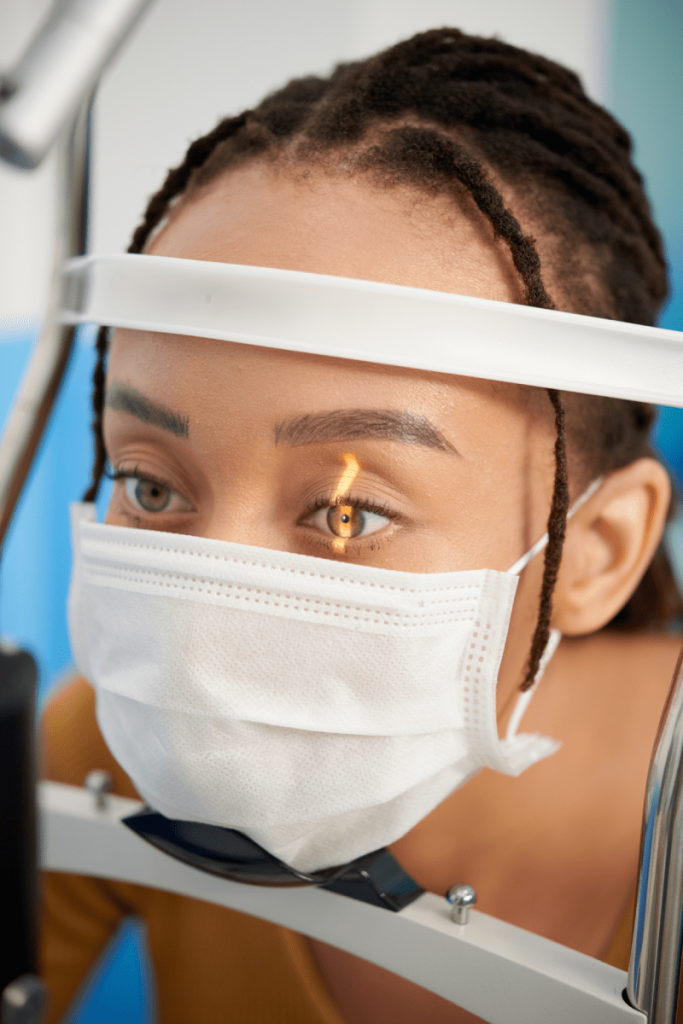
When Can Makeup Application Begin
To prevent the risk of infection and contamination of the flap after LASIK surgery, makeup application around the eyes should generally be paused for 1 to 2 weeks. Products like mascara, eyeliner, and eyeshadow, which are applied near the lash line, are dangerous as they carry the risk of harboring germs or entering the eye. Furthermore, rubbing the eyes during makeup removal can cause the flap to shift. Your physician will give you precise instructions on when you can safely start applying makeup after assessing the condition of your eye surface during your first week check-up.
Is There A Possibility Of Repeat Treatment (Touch-Up)
The rate of need for repeat treatment (touch-up) in LASIK treatment is low, and the vast majority of surgeries are successful in one attempt. However, a small amount of residual prescription may remain, especially in patients with very high-degree vision defects or rarely due to the cornea’s healing response. In this case, after waiting 6 to 12 months for the eye prescription to become completely stable, a quick and safe touch-up procedure can be applied to correct the remaining defect. The need for a touch-up indicates the eye’s individual healing response, not the quality of the LASIK method.
Will Glasses Or Lenses Be Needed After LASIK
The primary goal of LASIK surgery is to completely free patients from dependence on glasses and contact lenses. After a successful surgery, the vast majority of patients achieve clear and sharp vision. Even if a very small residual prescription remains, it is usually minimal enough not to affect daily life. However, LASIK does not solve the problem of presbyopia (age-related near vision loss) that occurs in individuals aged 40 and over, and these patients may need to use reading glasses in the future, which is not a treatment failure.
Are The Medical Standards In Turkey Reliable
Turkey has globally recognized high medical standards, particularly in the field of eye surgery. Many clinics are accredited by organizations such as the US-based JCI (Joint Commission International), which demonstrates that hospitals comply with international protocols for patient safety, technology use, and hygiene. Turkish eye surgeons have extensive experience and regularly attend international training. Cure Holiday meticulously selects clinics that meet these high standards and use modern devices, prioritizing your safety.
How Are Travel And Accommodation Organized
For patients traveling to Turkey for LASIK treatment, travel and accommodation arrangements are usually planned from start to finish by health tourism agencies like Cure Holiday. These comprehensive services typically include airport pick-up, private transfers to the treatment center and accommodation, reservations in partner, high-comfort hotels, and 24/7 language support throughout the treatment period. This allows patients to focus solely on their treatment with the comfort of knowing all details have been handled before arriving in Turkey.
What Does The Laser Do In Case Of Eye Blinking
The excimer laser devices used in modern LASIK surgeries are equipped with superior eye-tracker systems. This system detects and monitors the patient’s eye movements within milliseconds. If the patient involuntarily blinks or moves their eye, the laser beam immediately stops. When the eye returns to the correct position, the laser automatically continues the shots from the exact point where it stopped. This technology completely eliminates application errors that could be caused by eye movements, maximizing the safety and precision of the treatment.
How Does Cure Holiday Provide Support In This Process
Cure Holiday offers you personalized and individualized support from the beginning to the end of your LASIK journey in Turkey. They select internationally accredited, latest-technology clinics and experienced surgeons for you. They organize the details of your treatment package, appointment dates, airport transfers, and accommodation. Thus, you are left to focus only on your treatment process. By contacting Cure Holiday, you have the chance to learn about your eligibility for treatment, receive a personalized price quote, and safely plan all logistical details.
How Do International Prices Compare With Turkish Prices
In terms of the cost of LASIK treatment, Turkey offers much more affordable prices compared to Western countries such as Europe, the USA, and Canada. The prices of LASIK surgeries in Turkey are generally 60% to 80% lower than the equivalent procedures performed with the same quality and technology in the West. This large price advantage stems from Turkey’s low operational costs and the foreign exchange rate advantage, granting international patients access to world-class treatment without encountering high-cost barriers. Cure Holiday utilizes this cost advantage in the best way for you.
What Are The Touristic Benefits Of Getting Treated
Choosing to undergo LASIK treatment in Turkey also offers you a wonderful cultural travel opportunity, thanks to the quick recovery period. Since you can return to your daily activities just a few days after the surgery, you can dedicate a large portion of your trip to exploring the historical richness of Istanbul, the natural beauties of Antalya, or the charm of another city. Economical treatment, high-quality service, and an unforgettable travel experience are offered together. Cure Holiday helps you create a relaxing and cultural travel plan suitable for your recovery period.
